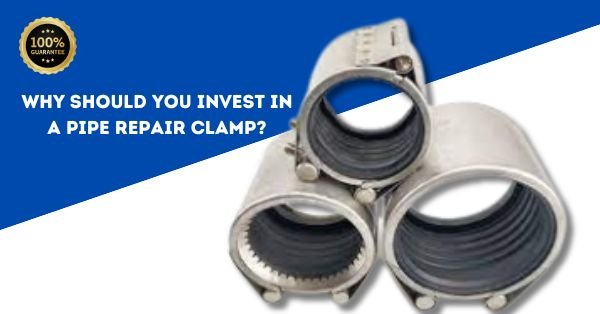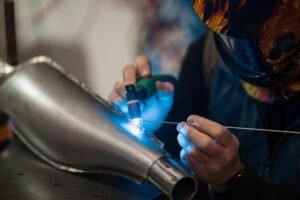In the intricate web of industrial infrastructure, the unsung hero often goes unnoticed – the humble Pipe Repair Clamp. As unassuming as it may seem, this indispensable tool plays a crucial role in maintaining the integrity of pipelines, preventing potential disasters, and ensuring smooth operations in diverse sectors. In this comprehensive exploration, we delve into the reasons why investing in a Pipe Repair Clamp is a judicious decision for any industry dealing with fluid conveyance systems.
Table of Contents
ToggleUnderstanding the Pipe Repair Clamp
Before we unravel the multitude of benefits associated with Pipe Repair Clamps, it’s imperative to comprehend their functionality. In essence, a Pipe Repair Clamp is a mechanical device designed to provide a quick and efficient solution for fixing leaks, cracks, or other structural issues in pipelines. Typically constructed from robust materials such as stainless steel, these clamps boast durability and resilience in the face of harsh operating conditions.
Ensuring Structural Integrity
One of the paramount reasons to consider investing in a Pipe Repair Clamp is its ability to safeguard the structural integrity of pipelines. When a section of the pipeline succumbs to wear, tear, or unforeseen damage, a swift response becomes paramount. The Pipe Repair Clamp emerges as a reliable solution, effectively containing leaks and preventing further deterioration.
The sophisticated engineering behind these clamps allows for a tight and secure fit around the damaged section of the pipe. This not only halts the leakage but also acts as a proactive measure to mitigate potential environmental hazards and financial losses associated with downtime.
Versatility Across Industries
The versatility of Pipe Repair Clamps is a testament to their universal applicability across a myriad of industries. From petrochemical plants to water treatment facilities, these clamps find utility in containing leaks in various types of pipes, including but not limited to steel, PVC, and cast iron.
In situations where shutting down an entire system for repairs is impractical or economically unviable, Pipe Repair Clamps offer a rapid and efficient alternative. This adaptability makes them an indispensable asset for industries where continuity of operations is paramount.
Rapid Response and Minimal Downtime
In the dynamic realm of industrial operations, time is often of the essence. The unique design of Pipe Repair Clamps facilitates a rapid response to unexpected pipeline issues. The installation process is streamlined and does not necessitate specialized skills, allowing for quick deployment by onsite personnel.
Moreover, the use of a Pipe Repair Clamp eliminates the need for extensive pipeline disassembly or shutdowns. This translates to minimal downtime, a critical factor in industries where uninterrupted production is synonymous with profitability.

Key Features of a High-Quality Pipe Repair Clamp
Investing in a Pipe Repair Clamp is not a one-size-fits-all proposition. Discerning consumers should be aware of the key features that distinguish a high-quality clamp from its counterparts. These features contribute to the overall effectiveness and longevity of the clamp, ensuring a sound return on investment.
Material Durability
The longevity and reliability of a Pipe Repair Clamp hinge significantly on the quality of materials used in its construction. Stainless steel, renowned for its corrosion resistance and structural robustness, stands out as a preferred choice. High-quality clamps are often manufactured using advanced alloys, enhancing their resistance to the corrosive effects of various fluids and environmental factors.
Pressure Rating
The ability of a Pipe Repair Clamp to withstand varying levels of pressure is a critical aspect of its functionality. Different applications demand clamps with specific pressure ratings to ensure optimal performance. Understanding the operational requirements and selecting a clamp with an appropriate pressure rating is paramount to preventing future complications.
Ease of Installation
In emergency situations, the last thing an industry needs is a complex and time-consuming installation process. A superior Pipe Repair Clamp is characterized by its user-friendly design, allowing for swift and straightforward installation. Manufacturers often provide clear instructions, and some clamps even incorporate innovative features such as self-locking mechanisms to simplify the installation further.
Compatibility with Pipe Diameter
Pipelines come in diverse shapes and sizes, and a well-designed Pipe Repair Clamp should accommodate this variability. Investing in clamps with adjustable diameters or multiple size options ensures versatility and applicability across a spectrum of pipelines within an industrial setting.

Conclusion: A Prudent Investment in Infrastructure Stability
In the intricate dance of industrial progress, the role of Pipe Repair Clamps is irrefutable. As silent sentinels, these unassuming devices stand guard, ready to respond to the unpredictable challenges posed by pipeline issues. The decision to invest in a Pipe Repair Clamp transcends immediate problem-solving; it embodies a commitment to structural integrity, operational efficiency, and fiscal responsibility.
Whether in the sprawling expanse of a petrochemical refinery or the labyrinthine network of municipal water pipelines, the benefits of Pipe Repair Clamps reverberate through diverse sectors. Their versatility, rapid deployment, and cost-effectiveness make them a strategic asset in the arsenal of industries reliant on fluid conveyance systems.
As technology propels the industrial landscape forward, the evolution of Pipe Repair Clamps mirrors a commitment to innovation and sustainability. Smart monitoring systems, advanced sealing mechanisms, and corrosion-resistant coatings exemplify the industry’s dedication to staying ahead of challenges and ensuring the longevity of critical infrastructure.
In conclusion, the decision to invest in a Pipe Repair Clamp is not merely a pragmatic response to a specific issue; it is a forward-looking investment in the stability and resilience of industrial infrastructure. In the dynamic tapestry of progress, where every component plays a vital role, the Pipe Repair Clamp stands as a testament to the adage that sometimes, the smallest tools bear the weight of the greatest responsibilities.
Frequently Asked Questions (FAQ)
1. What is a Pipe Repair Clamp?
A Pipe Repair Clamp is a mechanical device designed to quickly and effectively repair leaks, cracks, or structural issues in pipelines. Typically constructed from durable materials such as stainless steel, these clamps provide a secure and tight fit around damaged sections of pipes, preventing further deterioration.
2. How Does a Pipe Repair Clamp Work?
The working principle of a Pipe Repair Clamp involves its application around the damaged area of a pipe. The clamp exerts pressure, creating a tight seal and preventing leaks. The effectiveness lies in its ability to provide a rapid response without the need for extensive pipeline disassembly or shutdowns.
3. In Which Industries are Pipe Repair Clamps Used?
Pipe Repair Clamps find applications across a broad spectrum of industries, including but not limited to petrochemical plants, water treatment facilities, and municipal infrastructure. Their versatility makes them suitable for repairing various types of pipes, such as steel, PVC, and cast iron.
4. Why Should I Invest in a Pipe Repair Clamp?
Investing in a Pipe Repair Clamp is a prudent decision for several reasons. These clamps ensure the structural integrity of pipelines, offer a rapid response to unexpected issues, and minimize downtime. Their economic viability is evident in preventing costly downtime, avoiding environmental consequences, and providing long-term reliability.
5. What Features Should I Look for in a High-Quality Pipe Repair Clamp?
Key features of a high-quality Pipe Repair Clamp include material durability (preferably stainless steel), an appropriate pressure rating for specific applications, ease of installation, and compatibility with varying pipe diameters. These features collectively contribute to the clamp’s overall effectiveness and longevity.
You May Also Like :-
Which CPVC Pipe Is Used For Hot Water?
What Is The Difference Between ORP And Specific Conductance?




